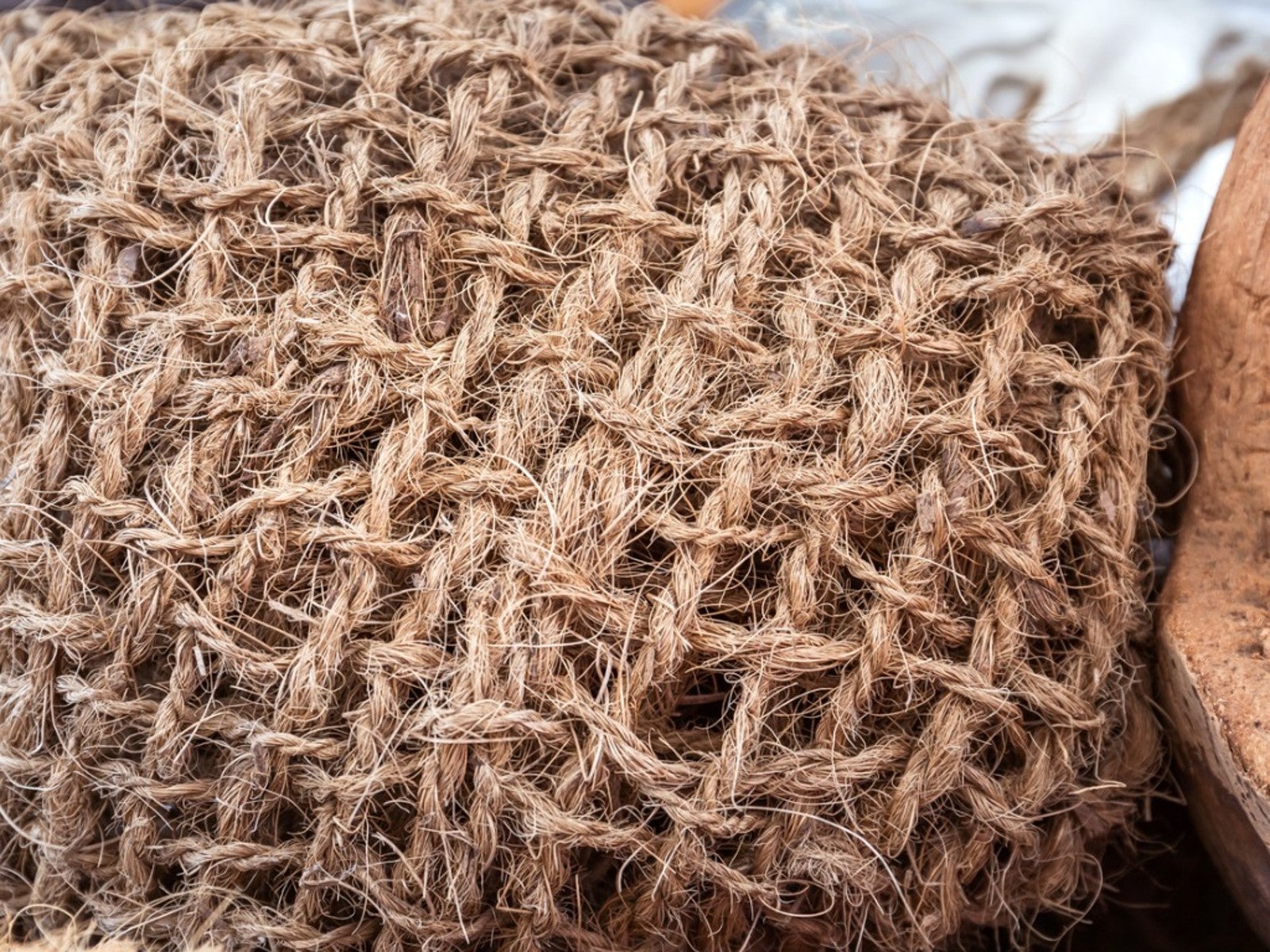Coir Netting Uses - Coir Matting For Erosion Control

Coir, the fibrous outer husk of coconuts, has been utilized by humans for thousands of years. Even today, this natural material finds regular use. Coir netting, while commonly used to protect plants from erosion damage, is a natural fiber that can be extremely versatile in the home garden and landscape.
Coconut Coir Netting: Coir Matting Roll for Garden Use
When spun together, coconut coir can be made into netting, logs, and mats.
Coir logs, also known as a coir netting roll, are made of coconut coir netting wrapped around loose coir fibers, creating a cylindrical log. These logs are key in erosion control along hillsides or near water features. The rolls are placed along slopes and then staked on the downhill side. Once situated, they act as screens, allowing water to run off and keeping everything else in place.
Coconut coir netting is usually used alongside the wrapped logs. This netting is ideal for covering large slopes, where fine dirt has been loosened, or steep hillsides that have been recently planted. The netting helps maintain soil structure while providing anchorage for plants.
When tackling smaller areas, or focusing on individual plants, another option is coir matting. Erosion control is an important factor when picking planting locations. When planting on hillsides, in areas with poor drainage, or near water features, you should definitely consider a coir matting roll.
For garden applications, these mats also make an excellent mulch. Coir mats are thicker and heavier than the netting and do a great job suppressing weed growth.
Organic Versatility
It’s extremely common to find newly developed hillsides or local trails covered in coconut coir matting. Landscape experts choose this material because it is relatively cheap, flexible, and (most importantly) organic. Coir is, again, a natural fiber and makes an excellent compost material. When old coir logs are degrading, they can be added to compost piles further adding to their usefulness.
Sign up for the Gardening Know How newsletter today and receive a free copy of our e-book "How to Grow Delicious Tomatoes".
As time passes, young landscapes grow, take root, and the coir breaks down. All manner of organisms in the soil feed on the coconut husks, birds use loose strands for new nests, and eventually the coir disappears, leaving behind a seamless landscape.